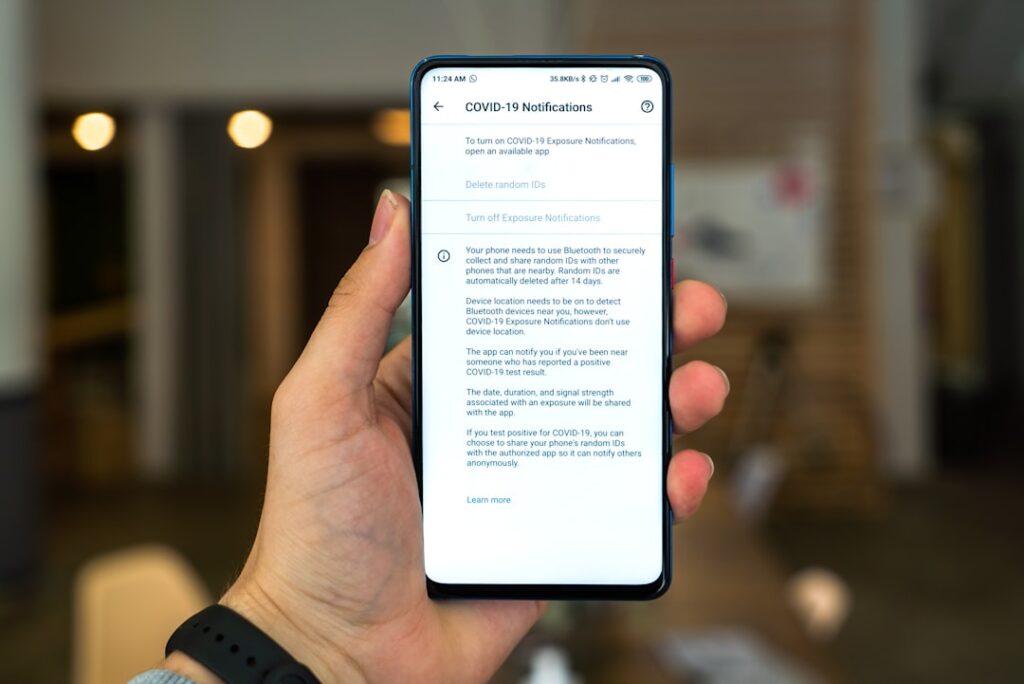The Health Insurance Portability and Accountability Act (HIPAA) is a critical framework that governs the protection of patient information in the United States. As telehealth continues to gain traction, understanding HIPAA compliance becomes increasingly vital for healthcare providers. Telehealth services, which allow for remote patient consultations and monitoring, must adhere to HIPAA regulations to ensure that patient data remains confidential and secure.
This compliance is not merely a legal obligation; it is essential for maintaining patient trust and safeguarding the integrity of healthcare systems. HIPAA compliance in telehealth encompasses several key components, including the Privacy Rule, which mandates the protection of patient health information (PHI), and the Security Rule, which outlines the necessary safeguards for electronic PHI (ePHI).
Failure to comply with these regulations can result in significant penalties, including fines and reputational damage. Therefore, understanding the nuances of HIPAA compliance is crucial for healthcare organizations looking to leverage telehealth effectively.
Key Takeaways
- HIPAA compliance is essential in telehealth to protect patient privacy and security.
- Choose telehealth tools that are specifically designed to meet HIPAA compliance standards.
- Ensure secure communication in telehealth by using encrypted platforms and secure networks.
- Protect patient data in telehealth by implementing strict access controls and regular security audits.
- Train staff on HIPAA-compliant telehealth practices to ensure proper handling of patient information.
Choosing the Right Telehealth Tools for HIPAA Compliance
Key Security Features to Look For
When evaluating telehealth solutions, healthcare providers should prioritize platforms that offer end-to-end encryption, secure user authentication, and comprehensive audit trails. These features are essential for safeguarding electronic protected health information (ePHI) during transmission and storage.
The Importance of a Business Associate Agreement
Moreover, it is important to consider whether the telehealth vendor is willing to sign a Business Associate Agreement (BAA). A BAA is a legal document that outlines the responsibilities of both parties in protecting PHI.
Mitigating Risks and Ensuring Compliance
By partnering with vendors who are compliant with HIPAA regulations and willing to enter into a BAA, healthcare organizations can mitigate risks associated with data breaches and ensure that their telehealth practices align with legal requirements.
Ensuring Secure Communication in Telehealth

Secure communication is paramount in telehealth settings, where sensitive patient information is exchanged over digital platforms. To ensure secure communication, healthcare providers should utilize encrypted communication channels that protect data from unauthorized access. This includes using secure video conferencing tools that comply with HIPAA standards and implementing secure messaging systems for patient-provider interactions.
In addition to encryption, healthcare organizations should establish clear protocols for communication. This includes verifying the identity of patients before discussing sensitive information and ensuring that all communications are conducted through secure channels. Regular audits of communication practices can help identify potential vulnerabilities and reinforce a culture of security within the organization.
Protecting Patient Data in Telehealth
Protecting patient data in telehealth involves a multi-faceted approach that encompasses technology, policies, and staff training. Healthcare organizations must implement robust cybersecurity measures to safeguard ePHI from cyber threats. This includes deploying firewalls, intrusion detection systems, and regular software updates to protect against vulnerabilities.
Furthermore, organizations should develop comprehensive data protection policies that outline how patient information is collected, stored, and shared. These policies should be regularly reviewed and updated to reflect changes in technology and regulations. Additionally, staff training is essential to ensure that all employees understand their roles in protecting patient data and are aware of the potential risks associated with telehealth.
Training Staff on HIPAA-Compliant Telehealth Practices
Staff training is a critical component of maintaining HIPAA compliance in telehealth. Healthcare organizations must ensure that all employees are well-versed in HIPAA regulations and understand the importance of safeguarding patient information. Training programs should cover topics such as secure communication practices, data protection policies, and the proper use of telehealth tools.
Regular training sessions can help reinforce compliance and keep staff informed about emerging threats and best practices. Additionally, organizations should consider implementing a culture of accountability where employees feel empowered to report potential breaches or security concerns without fear of retribution. This proactive approach can significantly enhance an organization’s overall security posture.
Integrating Telehealth Tools with Electronic Health Records (EHR)

Ensuring Interoperability and Security
When selecting telehealth solutions, healthcare organizations should prioritize those that offer interoperability with existing EHR systems while maintaining robust security measures.
Thorough Testing and Protocol Establishment
The integration process should involve thorough testing to ensure that patient data is transmitted securely between systems without compromising confidentiality. Additionally, organizations should establish clear protocols for accessing and sharing ePHI within integrated systems to minimize the risk of unauthorized access.
Enhancing Care Coordination while Ensuring Compliance
By effectively integrating telehealth tools with EHRs, healthcare providers can enhance care coordination while ensuring compliance with HIPAA regulations.
Addressing Legal and Ethical Considerations in Telehealth
Telehealth presents unique legal and ethical considerations that healthcare providers must navigate carefully. Beyond HIPAA compliance, providers must consider issues such as informed consent, liability, and the standard of care in virtual settings. Informed consent is particularly important in telehealth; patients should be fully aware of how their information will be used and the limitations of virtual consultations compared to in-person visits.
Liability concerns also arise in telehealth, as providers may face challenges in establishing a standard of care when delivering services remotely. It is crucial for healthcare organizations to develop clear policies regarding liability coverage for telehealth services and ensure that providers are adequately trained to deliver care within this framework. By addressing these legal and ethical considerations proactively, healthcare organizations can mitigate risks and enhance the quality of care delivered through telehealth.
Staying Up-to-Date with HIPAA Regulations in Telehealth
The landscape of healthcare regulations is constantly evolving, making it imperative for healthcare organizations to stay informed about changes to HIPAA regulations as they pertain to telehealth. Regularly reviewing updates from the Department of Health and Human Services (HHS) and other regulatory bodies can help organizations remain compliant and avoid potential pitfalls. Additionally, participating in industry forums, webinars, and professional associations can provide valuable insights into best practices and emerging trends in telehealth compliance.
Organizations should also consider appointing a compliance officer or team responsible for monitoring regulatory changes and ensuring that all staff are informed about new requirements. By staying up-to-date with HIPAA regulations, healthcare providers can continue to deliver high-quality telehealth services while safeguarding patient information. In conclusion, navigating HIPAA compliance in telehealth requires a comprehensive approach that encompasses technology selection, secure communication practices, staff training, and ongoing regulatory awareness.
By prioritizing these elements, healthcare organizations can effectively leverage telehealth while ensuring the protection of patient data. As the field continues to evolve with emerging technologies such as artificial intelligence and blockchain, staying informed about best practices will be essential for maintaining compliance and delivering high-quality care. Key takeaways include: – Understand the importance of HIPAA compliance in telehealth.
– Choose telehealth tools that prioritize security features.
– Ensure secure communication through encrypted channels.
– Protect patient data with robust cybersecurity measures.
– Train staff on HIPAA-compliant practices regularly.
– Integrate telehealth tools with EHRs securely.
– Address legal and ethical considerations proactively.
– Stay informed about changes in HIPAA regulations.
By implementing these strategies, healthcare professionals can enhance their telehealth offerings while safeguarding patient privacy and maintaining compliance with regulatory standards.
If you are interested in learning more about how cloud computing can maximize efficiency in the legal sector, check out this informative article on com/managed-it-services/how-cloud-computing-maximizes-efficiency-in-the-legal-sector/’>Tech Rockstars.
This article discusses the benefits of utilizing cloud computing technology in the legal industry and how it can streamline processes and improve overall productivity.
FAQs
What is HIPAA?
HIPAA stands for the Health Insurance Portability and Accountability Act. It is a federal law that was enacted in 1996 to protect the privacy and security of patients’ medical information.
What is telehealth?
Telehealth refers to the use of electronic information and telecommunications technologies to support long-distance clinical health care, patient and professional health-related education, public health, and health administration.
What are HIPAA-compliant telehealth tools?
HIPAA-compliant telehealth tools are software and platforms that adhere to the privacy and security standards outlined in the HIPAA law. These tools ensure that patient information is protected when used for telehealth services.
Why is it important for telehealth tools to be HIPAA-compliant?
It is important for telehealth tools to be HIPAA-compliant because they handle sensitive patient information, including medical records and personal health information. Compliance with HIPAA regulations helps to ensure the privacy and security of this information.
What are some examples of HIPAA-compliant telehealth tools?
Examples of HIPAA-compliant telehealth tools include video conferencing platforms with built-in encryption and secure messaging systems that protect patient data. These tools are designed to meet the security and privacy requirements of HIPAA.


